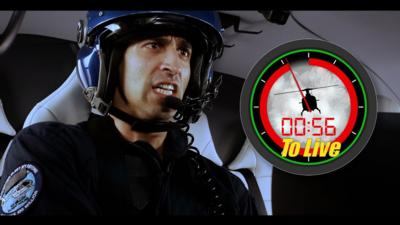Sat, Jul 31, 2021
The Training Program Includes A Video That Was Published By The USHST
By Rex Alexander
The rotorcraft industry was well represented on day one of this year’s EAA AirVenture with a presentation from members of the U.S. Helicopter Safety Team (USHST).

Team members included James Viola, President and CEO of Helicopter Association International (HAI), Bruce Webb Director of Aviation Education and Community Outreach at Airbus, Scott Boughton Owner at Palisade Aviation LLC, and Chris Hill Director of Safety at HAI.
The USHST members provided an overview of their new online training course entitled “56 Seconds to Live”, which is the estimated life expectancy of a helicopter pilot that inadvertently flies into IMC (Instrument Meteorological Conditions) and continues to trying to operate under VMC (Visual Meteorological Conditions). This safety education program builds upon some of the original research that was conducted back in 1954 by the Aircraft Owners and Pilots Association in collaboration with the University of Illinois that was used to develop the video for fixed wing pilot known as “178 Seconds to Live”.
The training program includes a video that was published by the USHST in which an all too often scenario is played out of a pilot who gets into bad weather but does not land the aircraft or turn around, but rather attempts to push on which ends in disastrous consequences. Members shared personal lessons learned from their own experiences. Bruce Webb said, “I never make a hotel reservation when I fly cross country”. “It may negatively influence my decision to continue on when I should turn around or land when encountering bad weather.” “I flew to Oshkosh in my R44 helicopter”, stated Jim Viola, “I started my weather planning five days out prior to my departure”.

Members also spoke of issues centered around some of the older language used in the FAA’s Helicopter Flying Handbook. In the past the handbook would instruct pilots to make a 180-degree turn if they encountered IMC weather. Bruce Webb pointed out that the average pilot does not generally fly a stabilized standard rate turn in their daily routine and hence revert to what is most practiced. This oftentimes results in a pilot flying a turn in excess of 30-degrees which in turn results in spatial disorientation followed by a loss of control. The USHST has since worked with the FAA to modify the handbook’s language to provide better safety guidance.
Scott Boughton, a helicopter air ambulance pilot, pointed to the original work done by the National EMS Pilots Association (NEMSPA) in their development of their Enroute Discission Point or EDP program. This entails the pilot setting specific parameters regarding minimum airspeed and altitude prior to flying that if they find themselves going below the decision to land or turn around is an automatic one.
More News
Takeoff Roll The process whereby an aircraft is aligned with the runway centerline and the aircraft is moving with the intent to take off. For helicopters, this pertains to the act>[...]
“We’re proud of the hard work that went into receiving this validation, and it will be a welcome relief to our customers in the European Union. We couldn’t be mor>[...]
"Aircraft Spruce is pleased to announce the acquisition of the parts distribution operations of Wag-Aero. Wag-Aero was founded in the 1960’s by Dick and Bobbie Wagner in the >[...]
IDENT Feature The special feature in the Air Traffic Control Radar Beacon System (ATCRBS) equipment. It is used to immediately distinguish one displayed beacon target from other be>[...]
Aero Linx: Pararescue Air Force Pararescuemen, also known as PJs, are the only DoD elite combat forces specifically organized, trained, equipped, and postured to conduct full spect>[...]
 ANN's Daily Aero-Term (05.10.24): Takeoff Roll
ANN's Daily Aero-Term (05.10.24): Takeoff Roll Aero-News: Quote of the Day (05.10.24)
Aero-News: Quote of the Day (05.10.24) Aero-News: Quote of the Day (05.11.24)
Aero-News: Quote of the Day (05.11.24) ANN's Daily Aero-Term (05.11.24): IDENT Feature
ANN's Daily Aero-Term (05.11.24): IDENT Feature ANN's Daily Aero-Linx (05.11.24)
ANN's Daily Aero-Linx (05.11.24)




